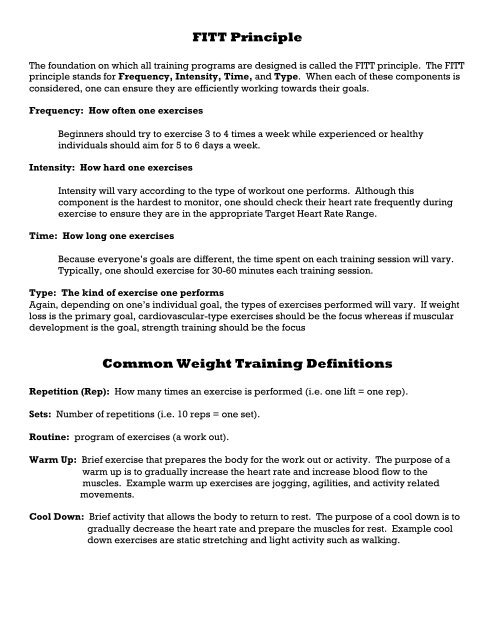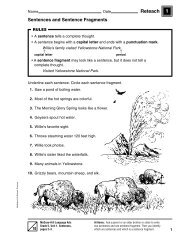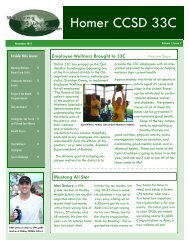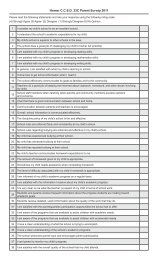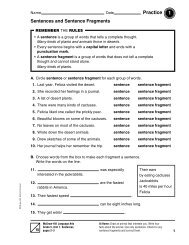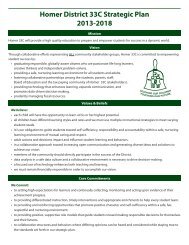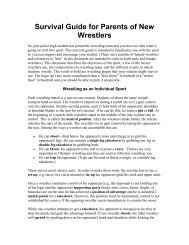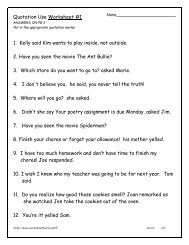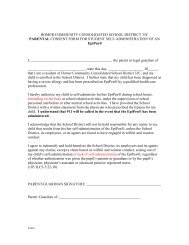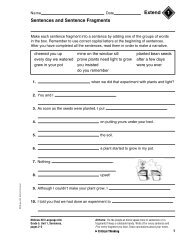FITT Principle Common Weight Training Definitions
FITT Principle Common Weight Training Definitions
FITT Principle Common Weight Training Definitions
You also want an ePaper? Increase the reach of your titles
YUMPU automatically turns print PDFs into web optimized ePapers that Google loves.
<strong>FITT</strong> <strong>Principle</strong><br />
The foundation on which all training programs are designed is called the <strong>FITT</strong> principle. The <strong>FITT</strong><br />
principle stands for Frequency, Intensity, Time, and Type. When each of these components is<br />
considered, one can ensure they are efficiently working towards their goals.<br />
Frequency: How often one exercises<br />
Beginners should try to exercise 3 to 4 times a week while experienced or healthy<br />
individuals should aim for 5 to 6 days a week.<br />
Intensity: How hard one exercises<br />
Intensity will vary according to the type of workout one performs. Although this<br />
component is the hardest to monitor, one should check their heart rate frequently during<br />
exercise to ensure they are in the appropriate Target Heart Rate Range.<br />
Time: How long one exercises<br />
Because everyone’s goals are different, the time spent on each training session will vary.<br />
Typically, one should exercise for 30-60 minutes each training session.<br />
Type: The kind of exercise one performs<br />
Again, depending on one’s individual goal, the types of exercises performed will vary. If weight<br />
loss is the primary goal, cardiovascular-type exercises should be the focus whereas if muscular<br />
development is the goal, strength training should be the focus<br />
<strong>Common</strong> <strong>Weight</strong> <strong>Training</strong> <strong>Definitions</strong><br />
Repetition (Rep): How many times an exercise is performed (i.e. one lift = one rep).<br />
Sets: Number of repetitions (i.e. 10 reps = one set).<br />
Routine: program of exercises (a work out).<br />
Warm Up: Brief exercise that prepares the body for the work out or activity. The purpose of a<br />
warm up is to gradually increase the heart rate and increase blood flow to the<br />
muscles. Example warm up exercises are jogging, agilities, and activity related<br />
movements.<br />
Cool Down: Brief activity that allows the body to return to rest. The purpose of a cool down is to<br />
gradually decrease the heart rate and prepare the muscles for rest. Example cool<br />
down exercises are static stretching and light activity such as walking.


